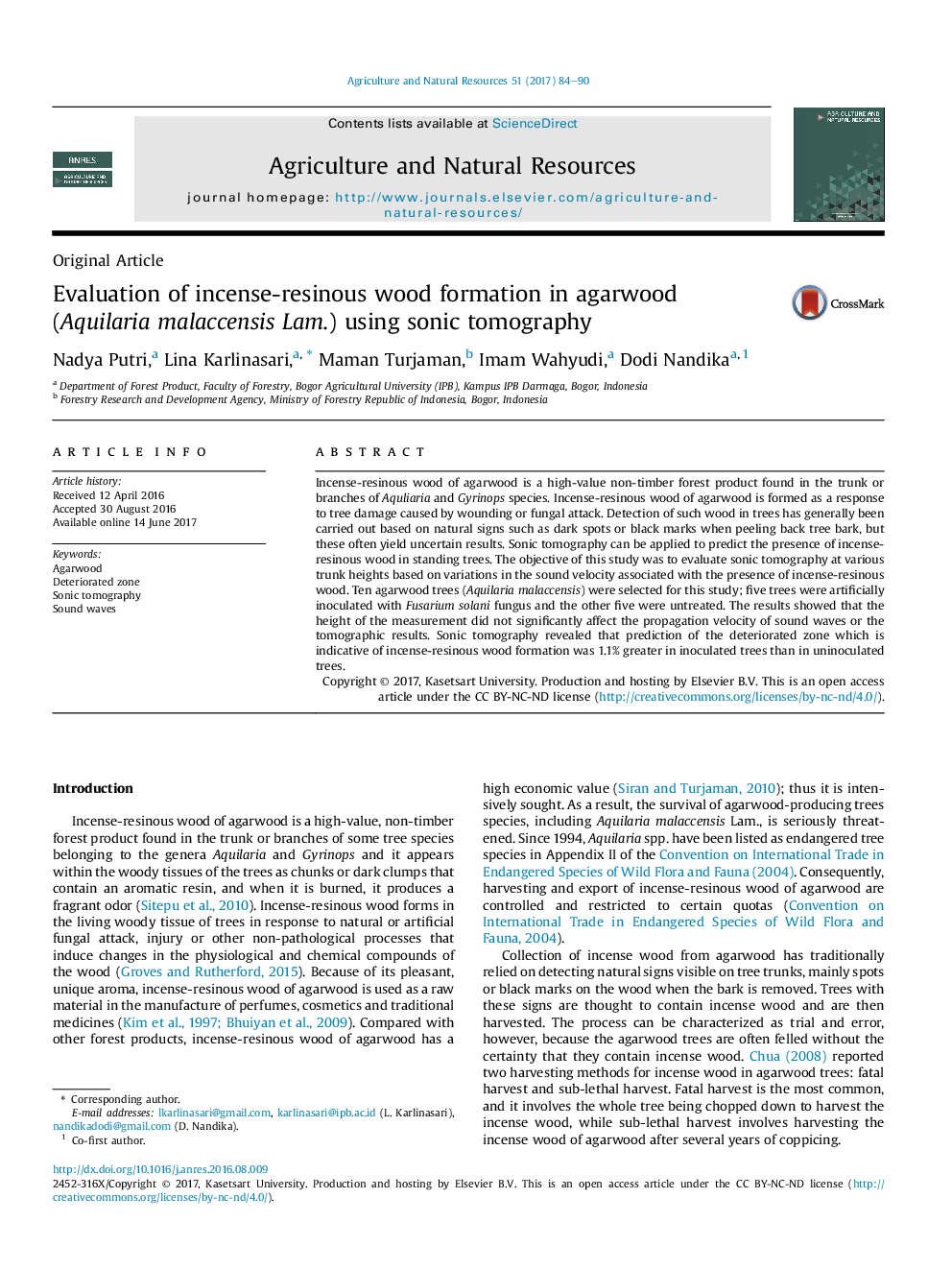| Article ID | Journal | Published Year | Pages | File Type |
|---|---|---|---|---|
| 6538097 | Agriculture and Natural Resources | 2017 | 7 Pages |
Abstract
Incense-resinous wood of agarwood is a high-value non-timber forest product found in the trunk or branches of Aquliaria and Gyrinops species. Incense-resinous wood of agarwood is formed as a response to tree damage caused by wounding or fungal attack. Detection of such wood in trees has generally been carried out based on natural signs such as dark spots or black marks when peeling back tree bark, but these often yield uncertain results. Sonic tomography can be applied to predict the presence of incense-resinous wood in standing trees. The objective of this study was to evaluate sonic tomography at various trunk heights based on variations in the sound velocity associated with the presence of incense-resinous wood. Ten agarwood trees (Aquilaria malaccensis) were selected for this study; five trees were artificially inoculated with Fusarium solani fungus and the other five were untreated. The results showed that the height of the measurement did not significantly affect the propagation velocity of sound waves or the tomographic results. Sonic tomography revealed that prediction of the deteriorated zone which is indicative of incense-resinous wood formation was 1.1% greater in inoculated trees than in uninoculated trees.
Keywords
Related Topics
Life Sciences
Agricultural and Biological Sciences
Forestry
Authors
Nadya Putri, Lina Karlinasari, Maman Turjaman, Imam Wahyudi, Dodi Nandika,
